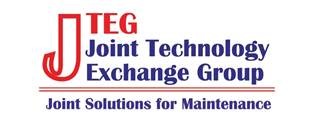 On 24 June, 2014, the Joint Technology Exchange Group (JTEG), in coordination with the National Center for Manufacturing Sciences (NCMS), hosted a three hour virtual forum on “Casting and Forging”. The purpose of the forum was to connect DOD needs with the industrial base and to exchange information on casting and forging technologies currently in use. The overarching DOD need is to improve the ability to obtain cast or forged parts in a timely manner without sacrificing quality. The technologies discussed included 3D printing of sandcasts and molds, and digital radiography inspection.
On 24 June, 2014, the Joint Technology Exchange Group (JTEG), in coordination with the National Center for Manufacturing Sciences (NCMS), hosted a three hour virtual forum on “Casting and Forging”. The purpose of the forum was to connect DOD needs with the industrial base and to exchange information on casting and forging technologies currently in use. The overarching DOD need is to improve the ability to obtain cast or forged parts in a timely manner without sacrificing quality. The technologies discussed included 3D printing of sandcasts and molds, and digital radiography inspection.
Forum documents:
DLA provided an overview and stated that casting and forging comprise 4-6% of the parts they manage, but account for a much higher 15-20% of the long back-ordered parts. Additionally, many of these parts are manufactured by 3rd tier suppliers who are small companies who have formed consortiums with DLA. DLA provided presentations on two of these consortiums, the American Metal Casting Consortium (AMC) and the Forging Defense Manufacturing Consortium (FDMC). The Naval Foundry and Propeller Center in Philadelphia followed with an information briefing on their unique capabilities.
The “Connecting American Manufacturing (CAM)” initiative was briefed. CAM’s objectives were to make it easier for U.S. manufacturers to work with DoD and to improve DoD’s ability to find U.S. manufacturers with the right capability and capacity at the right time. Unfortunately, CAM was discontinued for a variety of reasons to include a tedious source approvals request process, difficulties with the procurement process, and lack of available tech data.
The next brief involved the use of digital radiography to replace traditional film applications for nondestructive testing and inspection. Already in use in the commercial sector, it offers advantages such as fewer consumables, shorter exposure and processing times, and more environmentally friendly. The final briefing was on “Sandcastings and Molds at NUWC-Keyport”. The brief discussed several examples of parts being reverse engineered, molds designed, and parts printed while substantially reducing lead times and reducing costs.
In summary, DLA seems to be taking the lead in the technology. Challenges exist in specifications and standards as expected, and AMC will be road mapping challenges in metal casting research and development. JTEG, AMC, and FDMC agreed to exchange website links, and Jon Tirpak stated that the FDMC is always looking for participants in forging projects.
